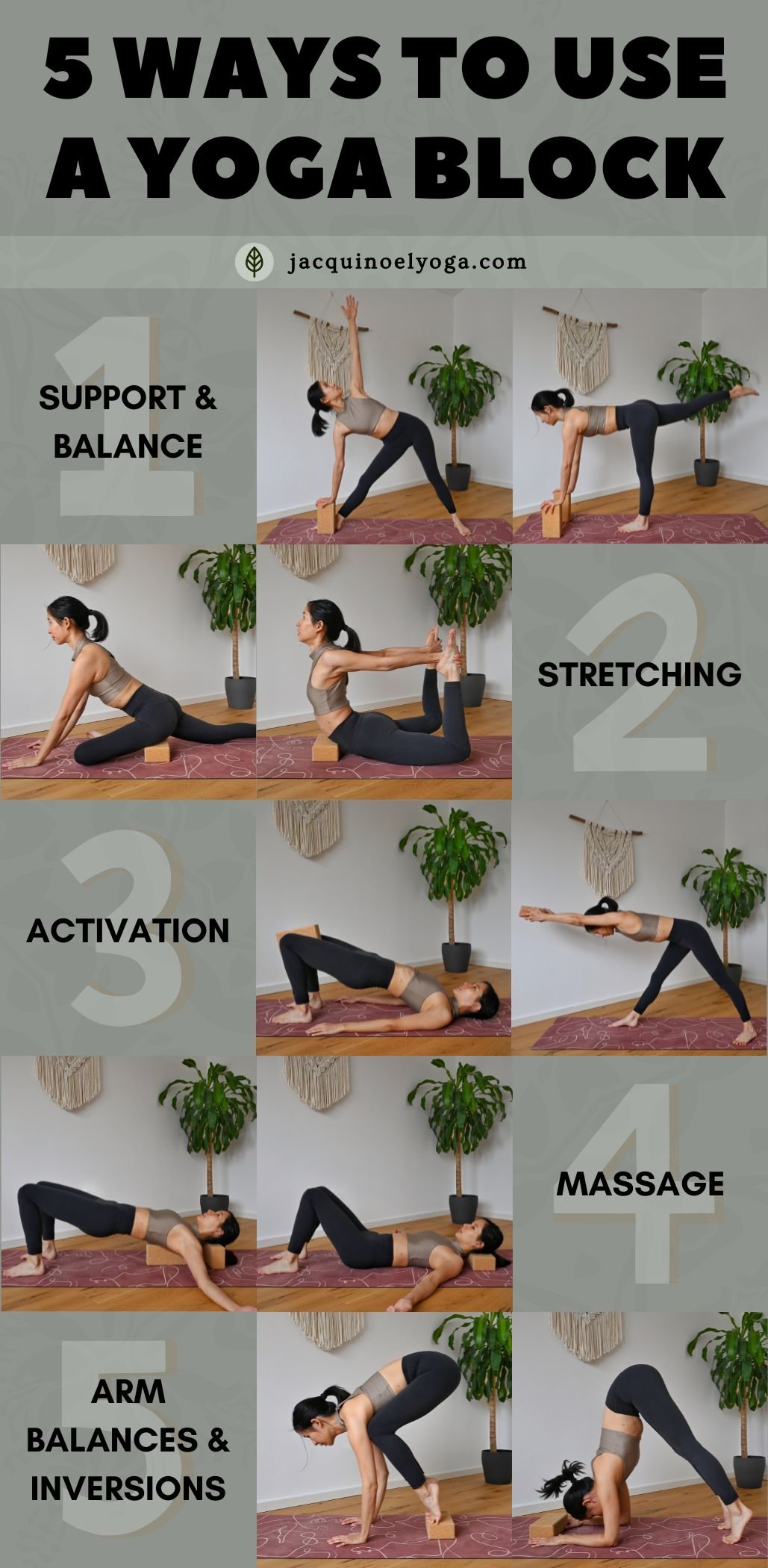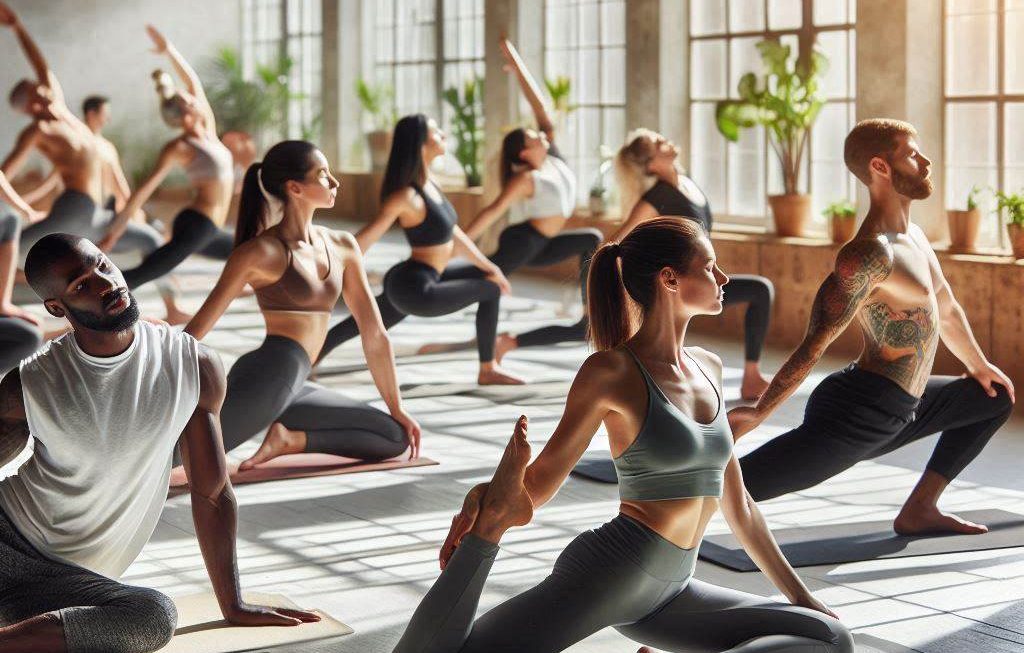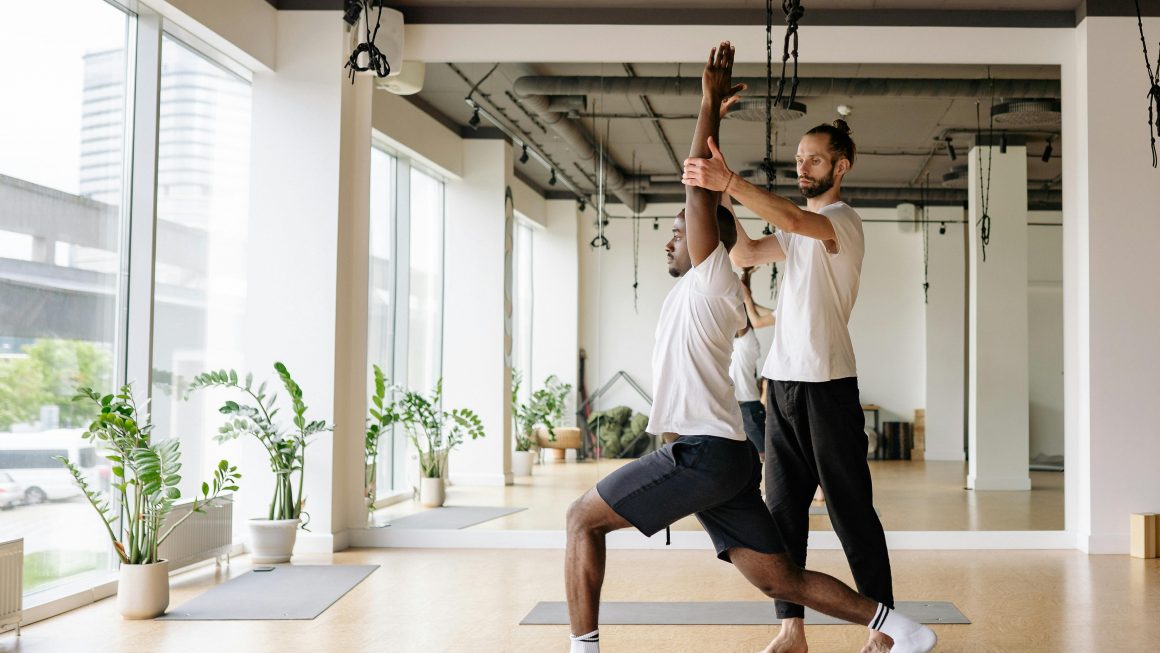A yoga block is a versatile tool used in various yoga practices. It helps enhance your poses and provides support.
Yoga blocks can make yoga accessible to everyone, regardless of skill level. They are especially helpful for beginners who might need extra support to achieve proper alignment. Yoga blocks can also assist advanced practitioners in deepening their stretches and improving balance.
Using a yoga block allows you to safely explore poses and build flexibility over time. Whether you are new to yoga or a seasoned yogi, incorporating a block into your practice can offer numerous benefits. It’s an essential prop that can transform your yoga experience, making it more comfortable and enjoyable.
Introduction To Yoga Blocks
Yoga blocks are essential tools for practitioners of all levels. These simple, yet versatile props can transform your yoga practice. They help you achieve better alignment, support, and balance.
Purpose And Benefits
Yoga blocks serve several purposes in your practice. They provide support during difficult poses. This allows you to maintain proper alignment. They also help you deepen stretches safely.
Here are some key benefits of using yoga blocks:
- Improved Alignment: Blocks help you maintain correct form.
- Increased Flexibility: They assist in reaching farther in poses.
- Enhanced Balance: Blocks offer stability in challenging positions.
- Support and Comfort: They reduce strain on muscles and joints.
Types Of Yoga Blocks
Yoga blocks come in various materials and sizes. Choosing the right one depends on your needs and preferences.
| Material | Characteristics |
|---|---|
| Cork | Eco-friendly, sturdy, and supportive. |
| Foam | Lightweight, soft, and affordable. |
| Wood | Heavy, durable, and provides solid support. |
Yoga blocks also come in different sizes. The standard size is 9x6x4 inches. Smaller blocks, like 9x6x3 inches, are also available.
Choose a block that feels comfortable and suits your practice style. Whether you prefer the firmness of wood or the softness of foam, there’s a block for you.
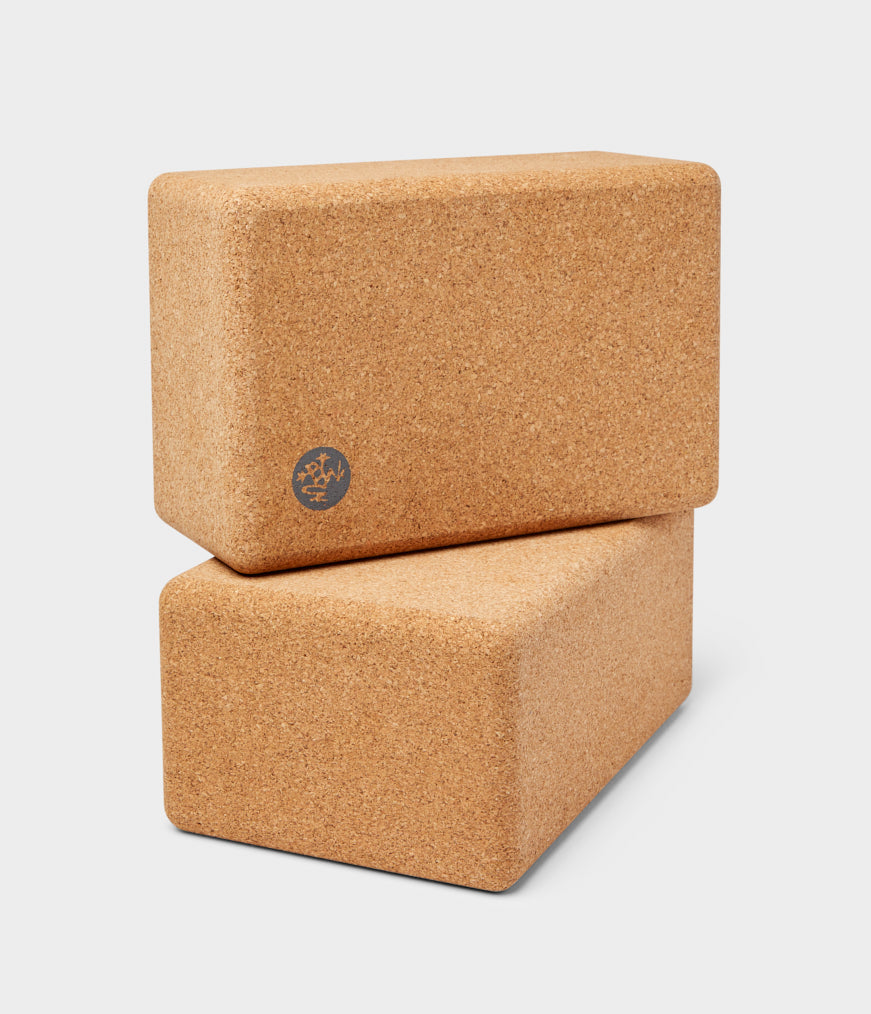
Credit: www.manduka.com
Choosing The Right Yoga Block
Yoga blocks are essential tools for both beginners and advanced yogis. They provide support, increase flexibility, and enhance poses. Choosing the right yoga block can be overwhelming. This guide will help you make an informed decision.
Materials And Sizes
Yoga blocks come in different materials. The most common are foam, cork, and wood.
| Material | Features |
|---|---|
| Foam | Lightweight, affordable, soft |
| Cork | Eco-friendly, durable, firm |
| Wood | Sturdy, heavy, long-lasting |
Sizes vary too. The standard size is 9″x6″x4″. Smaller blocks are 7″x5″x3″. Choose based on your hand size and needs.
Firmness And Weight
Firmness affects the support a block provides.
- Soft blocks are great for sitting and gentle poses.
- Firm blocks are better for standing poses and balance.
Weight is crucial too. Foam blocks are light, easy to carry. Cork and wood blocks are heavier but offer more stability.
Basic Poses With Yoga Blocks
Yoga blocks are great tools for enhancing your practice. They offer support, stability, and comfort in various poses. Let’s explore some basic poses with yoga blocks to get you started.
Mountain Pose
Mountain Pose, or Tadasana, is a foundational pose. Stand tall with your feet together. Place a yoga block between your thighs. Squeeze the block gently. This helps engage your inner thighs. Keep your spine straight and shoulders relaxed. Breathe deeply and hold for a few breaths.
Downward Dog
Downward Dog, or Adho Mukha Svanasana, is a common pose. Begin on your hands and knees. Place a block under each hand. Press into the blocks as you lift your hips up. Your body should form an inverted V shape. The blocks help lengthen your spine and create space in your shoulders. Hold the pose for a few breaths.
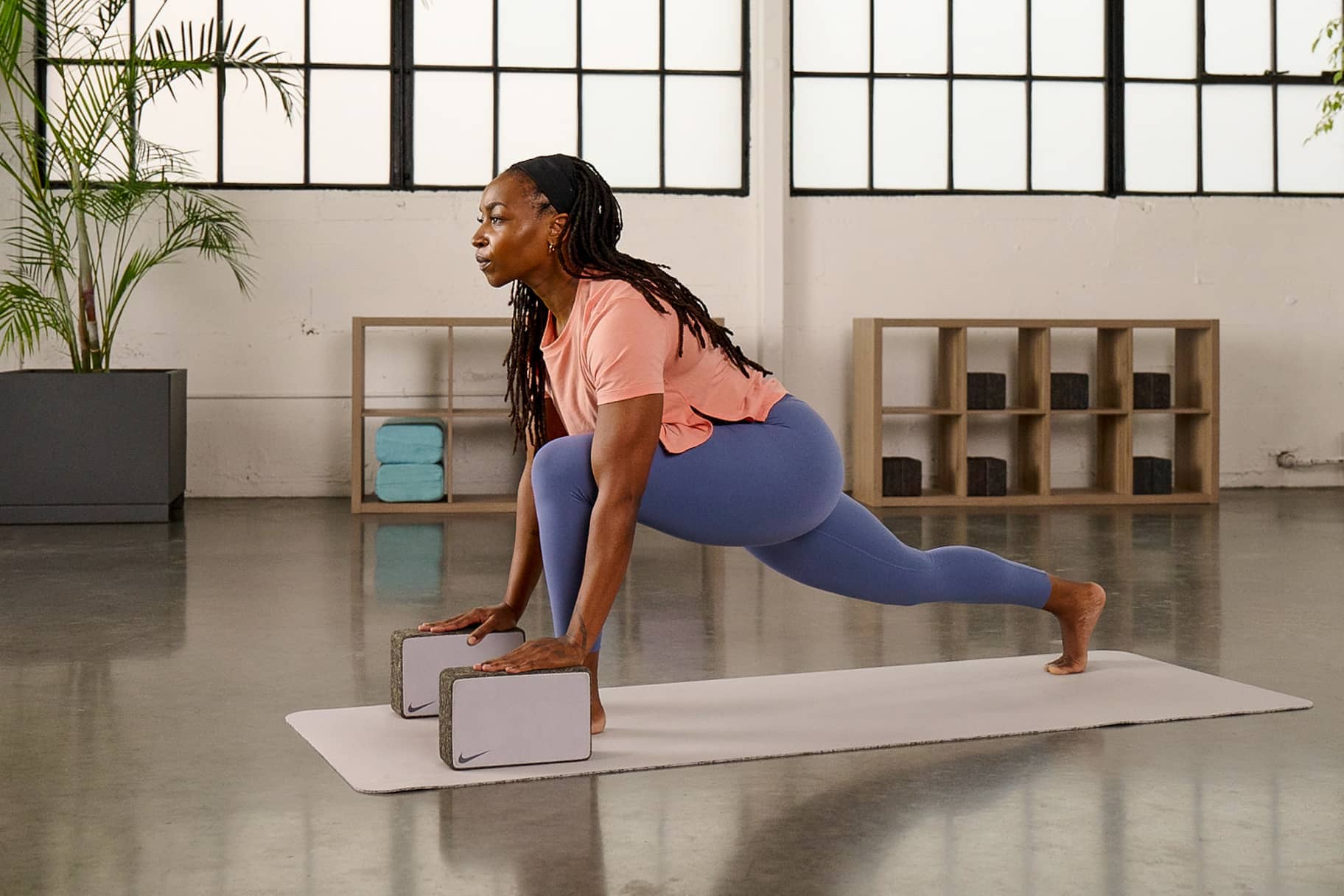
Credit: www.nike.com
Enhancing Flexibility
Enhancing flexibility is a key benefit of using a yoga block. Yoga blocks help you perform poses correctly and safely. They provide support and stability, allowing you to stretch deeper. This is especially useful for beginners or those with limited flexibility.
Forward Bends
Forward bends are essential for stretching the back and hamstrings. Using a yoga block in these poses can make a big difference. Place the block under your hands for support. This helps you reach the floor with ease. It also prevents overstraining your muscles.
For example, in a seated forward bend, use the block to support your forehead. This creates a gentle stretch and encourages relaxation. The block helps keep your spine lengthened. This is crucial for proper alignment and injury prevention.
Hip Openers
Hip openers are another area where yoga blocks shine. Tight hips can cause discomfort and limit mobility. A yoga block provides the support needed to ease into these poses. For instance, in pigeon pose, place a block under your hip.
This makes the stretch more accessible and less intense. It allows you to hold the pose longer, enhancing the flexibility of your hips. Blocks can also be used in poses like lizard or butterfly. They help you maintain balance and deepen the stretch. This leads to better flexibility and range of motion over time.
Balancing Poses With Support
Balancing poses in yoga can be challenging, especially for beginners. A yoga block provides much-needed support, making these poses accessible and safe. This section focuses on using a yoga block to enhance your balance and stability in Tree Pose and Half Moon Pose.
Tree Pose
Tree Pose, or Vrksasana, requires focus and balance. Place a yoga block under your lifted foot. This support helps you maintain your balance. Position the block at a height that feels comfortable. Use a wall if needed. Stand tall, engage your core, and place one foot on the block. Press your other foot firmly into the ground. Bring your hands together at your chest. Hold for several breaths, then switch sides. The block helps you feel stable and secure.
Half Moon Pose
Half Moon Pose, or Ardha Chandrasana, also benefits from a yoga block. Start in a standing position. Place the block on the ground next to your front foot. Shift your weight onto your front foot. Lift your back leg parallel to the ground. Use the block to support your lower hand. This support helps you open your chest and hips. Keep your gaze steady to maintain balance. Hold for several breaths, then switch sides. The block provides a stable base for this challenging pose.
Deepening Stretches
Yoga blocks are essential tools for enhancing your yoga practice. They help in achieving proper alignment and extending your reach. One of the key benefits of using a yoga block is to deepen your stretches. Let’s explore how a yoga block can assist in two popular poses: Seated Forward Fold and Reclining Bound Angle Pose.
Seated Forward Fold
The Seated Forward Fold, or Paschimottanasana, can be challenging. Using a yoga block helps to ease into the pose. Place the block in front of you. Sit with your legs extended. Inhale deeply and reach towards the block. Keep your spine straight. As you exhale, slowly fold forward, reaching for the block. The block provides support and helps you maintain proper alignment. This allows for a deeper stretch in the hamstrings and lower back.
Using a block in this pose also reduces the risk of injury. It helps in stretching safely. You can adjust the block’s height according to your flexibility. Start with the highest setting and gradually lower it as you become more comfortable. This incremental approach helps in improving flexibility over time.
Reclining Bound Angle Pose
Reclining Bound Angle Pose, or Supta Baddha Konasana, opens the hips and chest. A yoga block can enhance this pose significantly. Begin by lying on your back. Bring the soles of your feet together. Let your knees fall to the sides. Place a yoga block under each knee for support. This reduces strain on the inner thighs and hips.
Another way to use the block is by placing it under your lower back. This helps in gently lifting the hips. It provides a deeper stretch in the groin area. The support from the block allows you to relax more fully into the pose. This encourages a greater release of tension.
For added comfort, use a bolster or a folded blanket under your head. This ensures your spine remains in a neutral position. The combination of the block and the bolster helps in achieving a deeper, more restorative stretch.
Building Strength
Building strength with yoga blocks can enhance your practice. Yoga blocks provide support and stability. They also help you target specific muscles more effectively.
Plank Variations
Plank variations with yoga blocks can challenge your core. Place a block under each hand. This increases the instability, engaging your core more.
Try holding a high plank with blocks. Keep your body in a straight line. Engage your abs and hold for 30 seconds. Repeat three times for a stronger core.
You can also do side planks with blocks. Place one block under your bottom hand. Raise the other arm to the ceiling. This will help you balance and build side core strength.
Bridge Pose
Bridge pose with a yoga block can build glute and hamstring strength. Lie on your back with knees bent. Place a block between your thighs.
Squeeze the block and lift your hips. Hold this position for 15 seconds. Repeat this exercise for a stronger lower body.
You can also use the block under your sacrum. This variation provides support and helps you hold the pose longer. It allows deeper activation of your glutes and hamstrings.
Advanced Uses Of Yoga Blocks
Yoga blocks are versatile tools that can enhance your practice. They offer support and stability. While beginners often use them for basic poses, advanced practitioners can benefit too. Let’s explore some advanced uses of yoga blocks.
Arm Balances
Yoga blocks can help you build strength for arm balances. They provide a stable base. Place your hands on the blocks instead of the floor. This elevates your body and reduces the strain on your wrists. You’ll find it easier to balance and hold the pose longer. Try using blocks for poses like Crow or Firefly.
Inversions
Inversions can be challenging and scary. Yoga blocks can make them more accessible. Use blocks to support your shoulders in poses like Shoulder Stand. This reduces pressure on your neck. For Headstands, place the blocks under your shoulders. This helps to distribute weight and maintain balance. You’ll feel more secure and confident. Blocks can also assist in backbends. They help you go deeper into the pose safely.
Incorporating Yoga Blocks Into Daily Practice
Yoga blocks are versatile tools that can enhance your yoga practice. They help with alignment, support, and stability. Incorporating them into your daily practice can bring numerous benefits.
Routine Integration
Integrating yoga blocks into your routine is simple. They can be used in various poses to provide support and improve alignment. Here’s how to do it:
- Start your practice with a block under your seat in Sukhasana (Easy Pose). This helps elevate your hips.
- Use blocks under your hands in Downward-Facing Dog to reduce strain on your wrists.
- Place a block under your back in Bridge Pose for added support.
| Pose | Block Placement | Benefit |
|---|---|---|
| Easy Pose (Sukhasana) | Under the seat | Elevates hips |
| Downward-Facing Dog | Under hands | Reduces wrist strain |
| Bridge Pose | Under back | Added support |
Safety Tips
Using yoga blocks safely is crucial. Follow these tips:
- Ensure the block is stable on the ground.
- Do not put all your weight on the block.
- Use the block’s edges and flat surfaces for different support levels.
Yoga blocks can transform your practice. They make poses accessible and comfortable. By integrating and using them safely, you can enhance your yoga journey.

Credit: www.yogadirect.com
Frequently Asked Questions
What Is A Yoga Block Used For?
A yoga block is used to enhance yoga practice. It provides support, stability, and alignment. It helps in achieving proper poses and deepening stretches.
How To Choose The Right Yoga Block?
Choose a yoga block based on your needs. Consider the material, size, and density. Foam blocks are lightweight; cork blocks provide stability.
Can Beginners Use Yoga Blocks?
Yes, beginners can use yoga blocks. They help in modifying poses and improving flexibility. They make yoga practice more accessible and safe.
How Do Yoga Blocks Improve Flexibility?
Yoga blocks improve flexibility by providing support. They allow you to hold poses longer and stretch deeper. This helps in gradual flexibility improvement.
Conclusion
Yoga blocks offer great support for every yoga practice. They help with balance. They aid flexibility. They enhance poses. With a yoga block, poses become more accessible. Beginners and experts benefit alike. Choose a block that suits your needs. Start incorporating it into your routine.
Feel the difference in your practice. Remember, consistency is key. Happy practicing!

